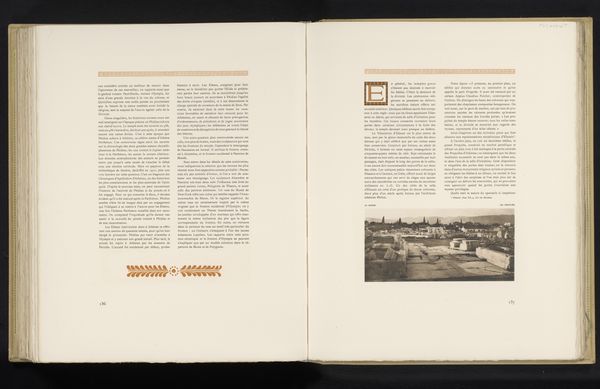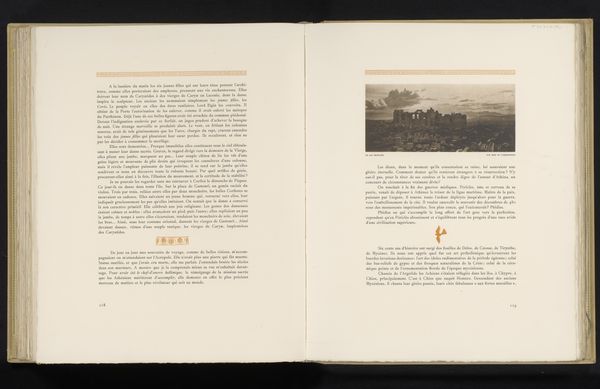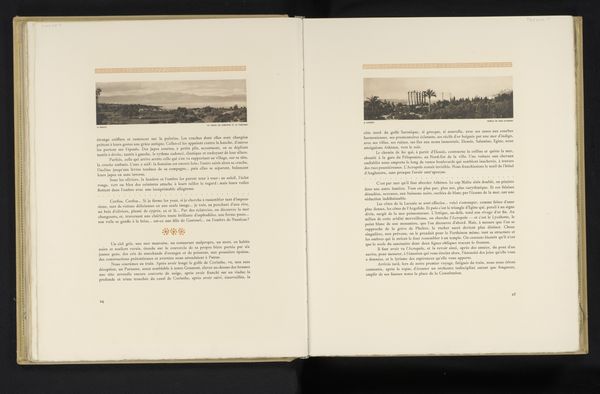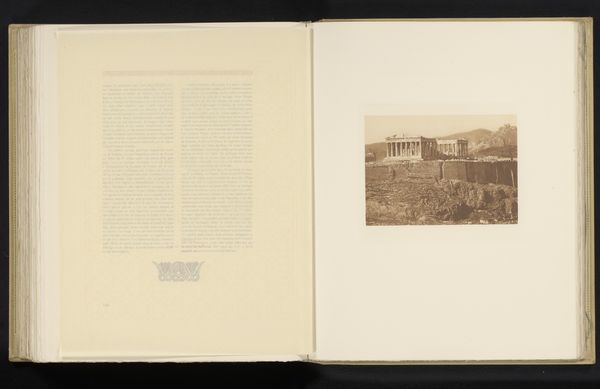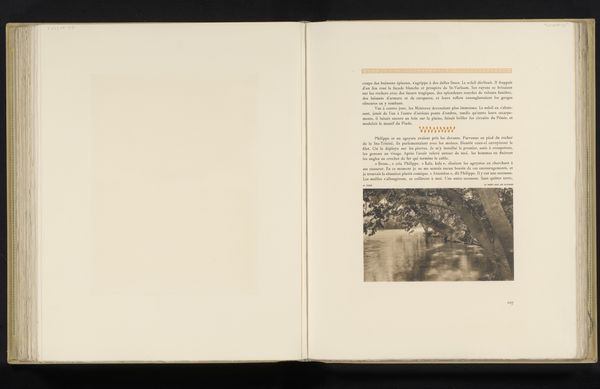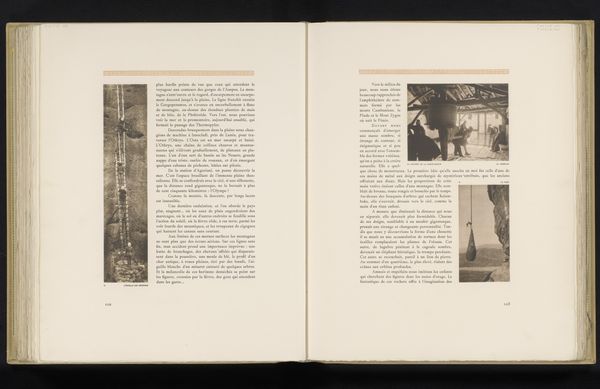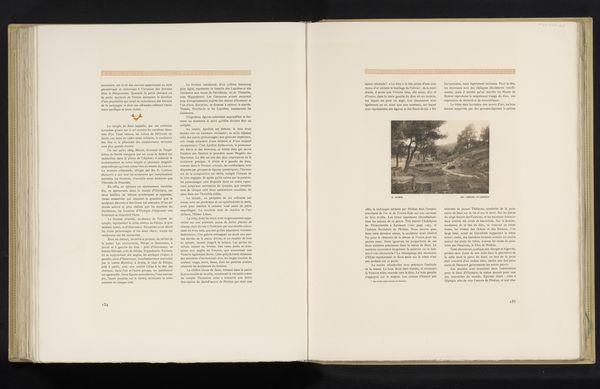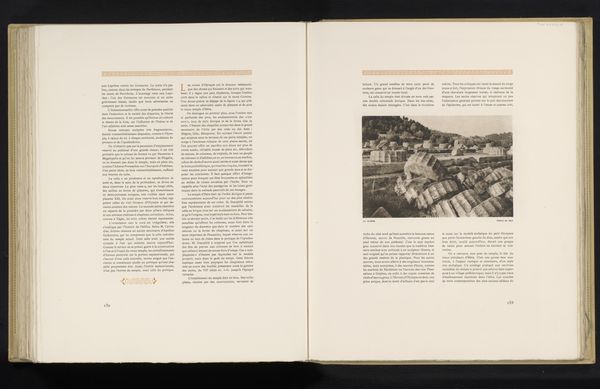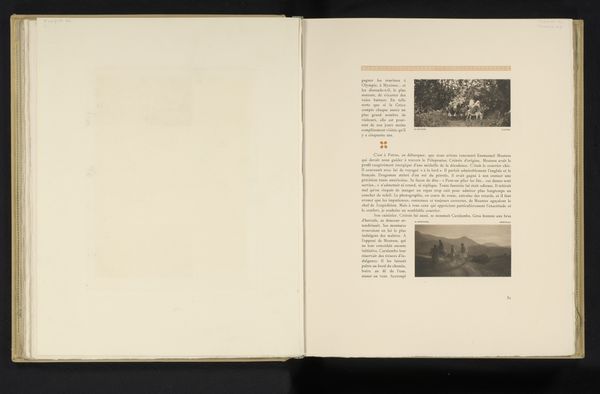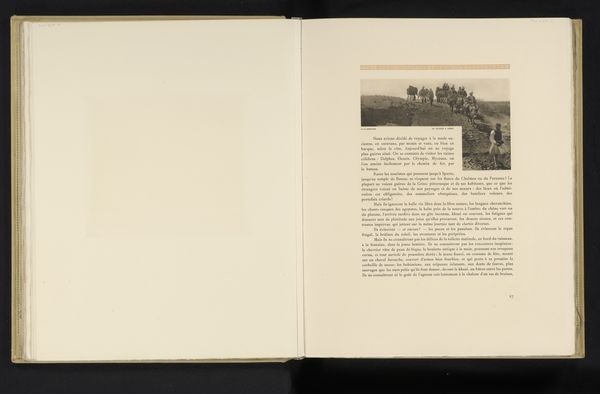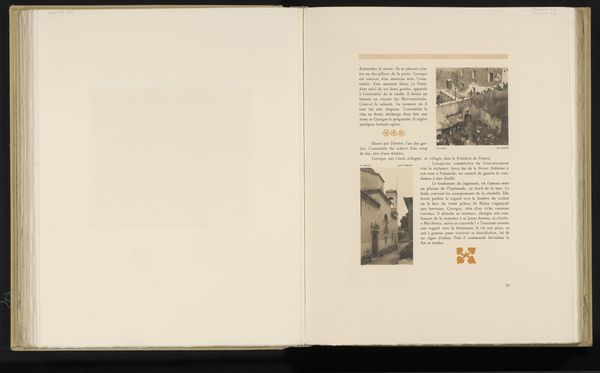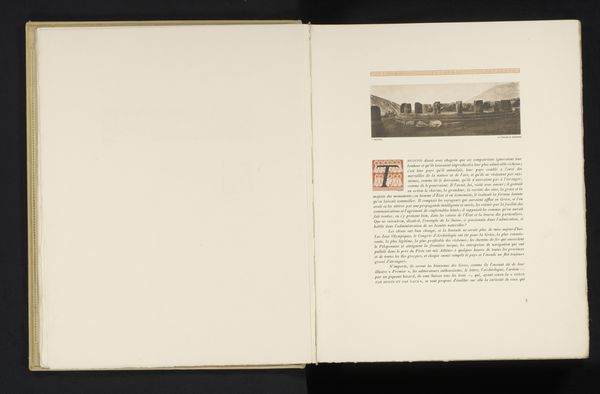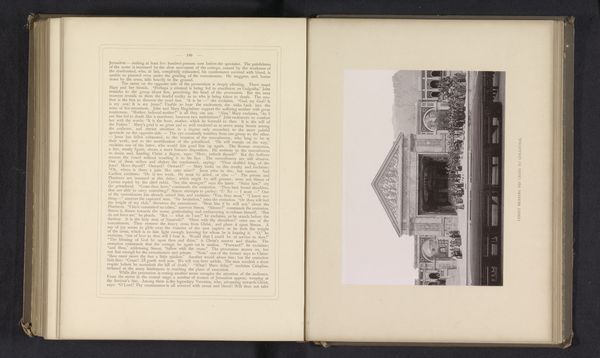
print, photography, collotype
# print
#
landscape
#
classical-realism
#
photography
#
collotype
#
ancient-mediterranean
Dimensions: height 93 mm, width 130 mm
Copyright: Rijks Museum: Open Domain
Curator: This spread comes from Fréderic Boissonnas's photo album, dating from before 1910, and presents sepia-toned collotypes. On the left, we see "Graftombes in Pompeï." Editor: It's strangely evocative, despite being a print within a book. There's something about the lighting and the stark geometry that creates a very somber mood. Curator: The collotype process is key here. It's a printing technique that relies on a light-sensitive gelatin layer, offering incredibly subtle tonal variations. Think about the labor involved—coating the plates, precise exposure times, the chemical baths—it's a fascinating process to get such a seemingly simple image. Editor: Absolutely, but it's the composition that grabs me. The strong horizontals of the road meeting those crumbling vertical tombs; how they punctuate the otherwise smooth, gradient sky. There's a clear structure. Curator: Well, Boissonnas wasn't just capturing ruins; he was framing the experience of visiting these sites. Consider his social status, his access to these places. His work participated in a specific market for visualizing classical heritage and catered to those able to purchase it. This shaped how and what he chose to photograph. Editor: I agree, though, the enduring visual impact stems from the play of light and shadow. See how it etches the texture of the stone. Those subtle variations in tone you mentioned are key to constructing that very texture. Curator: I find myself reflecting on the layers of making that this artwork involves: from the ruins being excavated, through Boissonnas’s decisions on perspective, and further through the decisions to produce it as a print…it all comes together to say quite a bit about labor and seeing itself. Editor: I'm more moved by the contrast, the light illuminating the road against the silent darkness within the tombs themselves. It highlights the poignancy of time passing and memory persisting, rendered in these very considered graphic tones.
Comments
No comments
Be the first to comment and join the conversation on the ultimate creative platform.
